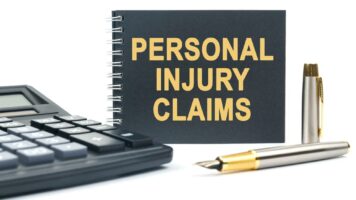If you sustained serious injuries due to someone else’s negligence or wrongful actions, you probably qualify to seek damages from the at-fault party for your medical bills and other economic losses. You may also receive non-economic damages for things that don’t have a defined dollar amount, such as the pain and suffering you’ve experienced since the crash.
As you struggle with your injuries and the emotional impact of the event, you may wonder, “How much can I get for pain and suffering?”
Unfortunately, there’s no simple formula to determine the exact amount you can receive for pain and suffering. Numerous factors can influence the amount, and it all depends on the specific circumstances of your case.
Understanding the factors that can affect pain and suffering damages can help you manage your expectations as you pursue compensation. You also need to know the steps you can take to maximize your financial recovery. For personalized advice and guidance with your case, contact an experienced personal injury attorney near you for a free consultation.
What Are Pain and Suffering Damages?
Pain and suffering damages fall under the category of non-economic damages in personal injury cases. Unlike economic damages that cover tangible costs like medical bills and lost wages, pain and suffering compensation aims to address the physical discomfort and emotional distress resulting from an injury.
These damages can include:
- Physical pain: The actual bodily discomfort and aches your injuries cause.
- Emotional distress: Mental anguish, anxiety, depression, or PTSD stemming from the accident and its aftermath.
- Loss of enjoyment of life: The inability to participate in activities you once enjoyed due to your injuries.
- Inconvenience: The disruption to your daily life and routines caused by the accident and recovery process.
- Disfigurement or scarring: Permanent changes to your appearance that may cause emotional distress.
Pain and suffering damages recognize that the impact of an injury goes beyond just financial losses. They aim to compensate you for the non-monetary hardships you’ve endured due to someone else’s negligence.
What Factors Influence Pain and Suffering Compensation?
Several factors can affect the amount of pain and suffering compensation you might receive:
- Severity of injuries: More serious injuries typically result in higher pain and suffering awards. For example, a traumatic brain injury or spinal cord damage will likely warrant more compensation than a minor sprain.
- Duration of recovery: Longer recovery periods often lead to increased pain and suffering damages. Chronic pain or permanent disabilities can significantly impact the compensation amount.
- Impact on daily life: The extent to which your injuries have disrupted your ability to work, engage in hobbies, or perform everyday tasks can influence your claim’s value.
- Age and pre-existing conditions: Younger individuals may receive higher awards due to the potential for long-term effects. Pre-existing conditions can complicate the assessment of damages.
- Emotional trauma: The psychological impact of the accident, such as developing anxiety, depression, or PTSD, can increase pain and suffering compensation.
- Evidence and documentation: Strong medical evidence, expert testimony, and detailed documentation of your pain and suffering can support a higher claim.
- Liability and fault: If the other party is clearly at fault, it may be easier to negotiate a higher settlement. In states with comparative negligence laws, your compensation might be reduced if you’re found partially at fault.
- Insurance policy limits: The at-fault party’s insurance coverage can cap the amount of compensation available, regardless of the extent of your pain and suffering.
- Jurisdiction: Laws and typical award amounts can vary by state and even by county, influencing the potential compensation.
- Plaintiff’s credibility: Your ability to clearly and consistently describe your pain and suffering can impact the perceived value of your claim.
Understanding these factors can help you and your attorney build a stronger case for fair compensation.
How Is Pain and Suffering Calculated?
There’s no standardized method for calculating pain and suffering damages. Some insurance companies use computer programs to calculate pain and suffering damages. These programs consider various factors and data from similar cases to suggest a settlement range.
Ultimately, the amount of pain and suffering compensation often comes down to negotiation between your attorney and the insurance company or, if the case goes to trial, becomes a jury’s decision.
What Are Common Challenges in Getting Pain and Suffering Compensation?
Some common challenges personal injury lawyers must overcome in getting their clients pain and suffering compensation include:
- Subjective nature: Each person experiences pain and suffering differently. This makes them harder to quantify than economic damages.
- Insurance company tactics: Insurers often try to minimize pain and suffering claims to reduce their payout. They may dispute the severity of your injuries or argue that you’re exaggerating your pain.
- Lack of documentation: Without proper evidence, it can be difficult to prove the extent of your pain and suffering.
- Pre-existing conditions: Insurance companies may argue that your pain stems from pre-existing conditions rather than the accident.
- Delayed symptoms: Some injuries, particularly those affecting the brain or spine, may not show immediate symptoms, complicating the claims process.
- State laws: Some states have caps on non-economic damages, limiting the amount you can receive for pain and suffering.
- Comparative negligence: If you’re found partially at fault for the accident, the court or insurance company may reduce your compensation.
- Inadequate insurance coverage: The at-fault party’s insurance policy limits may not be sufficient to fully compensate you for your pain and suffering.
- Jury unpredictability: If your case goes to trial, jury awards for pain and suffering can be unpredictable and vary widely.
- Proving long-term impact: It can be challenging to demonstrate the long-term effects of your injuries on your quality of life, especially early in the recovery process.
How Can I Maximize My Pain and Suffering Damages?
While there’s no guaranteed way to maximize your pain and suffering compensation, there are steps you can take to strengthen your claim:
- Get medical attention right after the accident. Prompt medical care creates a clear link between the accident and your injuries.
- Follow all treatment plans and attend all follow-up appointments. Don’t deviate from your doctor’s orders or end your treatment prematurely.
- Ensure that your descriptions of pain and suffering are consistent across all medical visits and legal proceedings. Don’t exaggerate your pain and be honest about your experiences and limitations.
- Keep detailed records of your medical treatments, medications, and how your injuries affect your daily life.
- Keep a pain journal to track your physical and emotional state.
- Work with your attorney and medical professionals to assess any potential long-term effects of your injuries.
- Share any evidence you can with your attorney to substantiate your claim. This could include damaged clothing and other property or photos of your injuries.
- Provide concrete examples of how your injuries have affected your relationships, hobbies, and overall quality of life.
- Don’t rush to settle your claim. Be patient and avoid accepting the first settlement offer. The initial offer is often far less than what you need.
- Medical experts, life care planners, and vocational experts can provide professional opinions on the extent and impact of your injuries.
- If your case progresses to trial, be ready to clearly and compellingly describe your pain and suffering under oath.
- Be cautious about what you post online, as insurance companies may use your social media activity to dispute your claims.
- Review the at-fault party’s insurance coverage limits with your attorney. It can help set realistic expectations for your compensation.
Remember, maximizing your pain and suffering damages isn’t about exaggerating your injuries. It’s about fully and accurately representing the true impact of the accident on your life. Working closely with your attorney ensures they have all the information needed to build a strong case for maximum compensation.
How Can an Attorney Help?
A skilled car accident attorney can greatly increase your chances of getting the most for your pain and suffering by:
- Collecting and organizing all necessary evidence to support your claim and build a strong case for you
- Properly valuing your pain and suffering damages and considering all relevant factors of how your injuries will affect your life going forward
- Handling all communications with the insurance companies and protecting you from their questionable defense tactics to reduce or deny your claim
- Navigating any legal complexities effectively and safeguarding your rights and interests
- Using industry experts, such as medical professionals, accident reconstruction specialists, and financial advisers to strengthen your case and attest to the full extent of your pain and suffering
- Thoroughly investigating other avenues for compensation and pursuing claims against other at-fault parties
- Representing you at trial, if necessary, and fighting to increase your overall award
Other benefits of working with an attorney include:
- Objectivity: An attorney can provide an unbiased perspective on your case, helping you make informed decisions throughout the process.
- Expediting your case: With their knowledge of the legal system, attorneys can often resolve cases quicker than individuals handling claims on their own.
- Countering lowball offers: They can recognize and push back against unfair settlement offers from insurance companies.
- Alternative dispute resolution: If appropriate, an attorney can guide you through mediation or arbitration processes as alternatives to going to trial.
- Contingency fee basis: Many personal injury attorneys work on a contingency basis, meaning you don’t pay anything upfront to hire them. They’ll handle all aspects of your case and work to get the best settlement or award possible. They only receive attorney fees if they recover damages for you as a percentage of your award.
One of the most important benefits of having an attorney handle your case is peace of mind. You won’t have to worry about dealing with insurance companies or complex legal procedures and terminology. Instead, you can rest and recover and feel at ease knowing a dedicated legal professional is working hard for you and looking out for your best interests.
Contact an Experienced Car Accident Lawyer Today
If you’re suffering from pain and psychological trauma because of another person or entity’s carelessness or other wrongdoing, the personal injury attorneys at Cook, Barkett, Ponder & Wolz are here to help.
We understand the detrimental effects a serious injury can have on you and your family. We’re committed to helping you hold the at-fault party accountable and recover the maximum compensation you deserve. You can rely on us to consider all aspects of how the accident and your injuries have affected your life and fight to ensure you get all you need.
With more than 100 years of combined legal experience, our attorneys have the resources and skills to thoroughly investigate your accident, gather compelling evidence, and build a strong case for you.
Don’t let insurance companies undervalue your pain and suffering. Contact Cook, Barkett, Ponder & Wolz today for a free, confidential consultation. You won’t pay anything upfront for us to represent you. Let us improve your odds of getting the most from your pain and suffering so you can move on from this horrific event.






